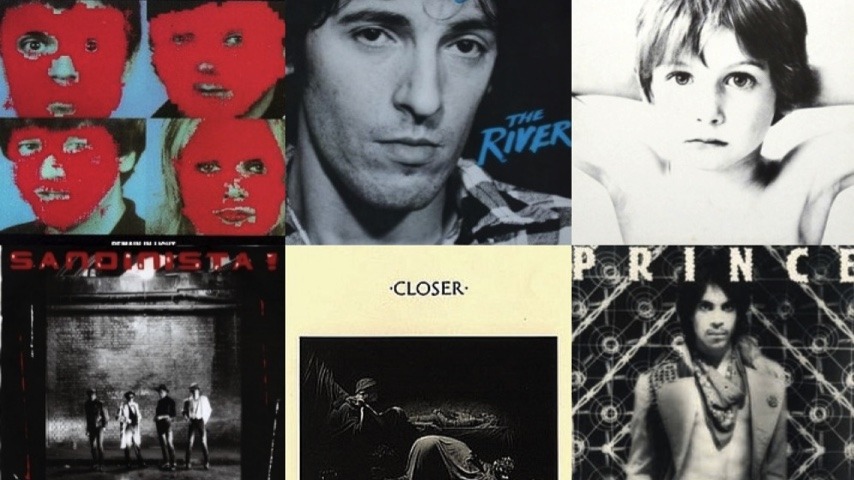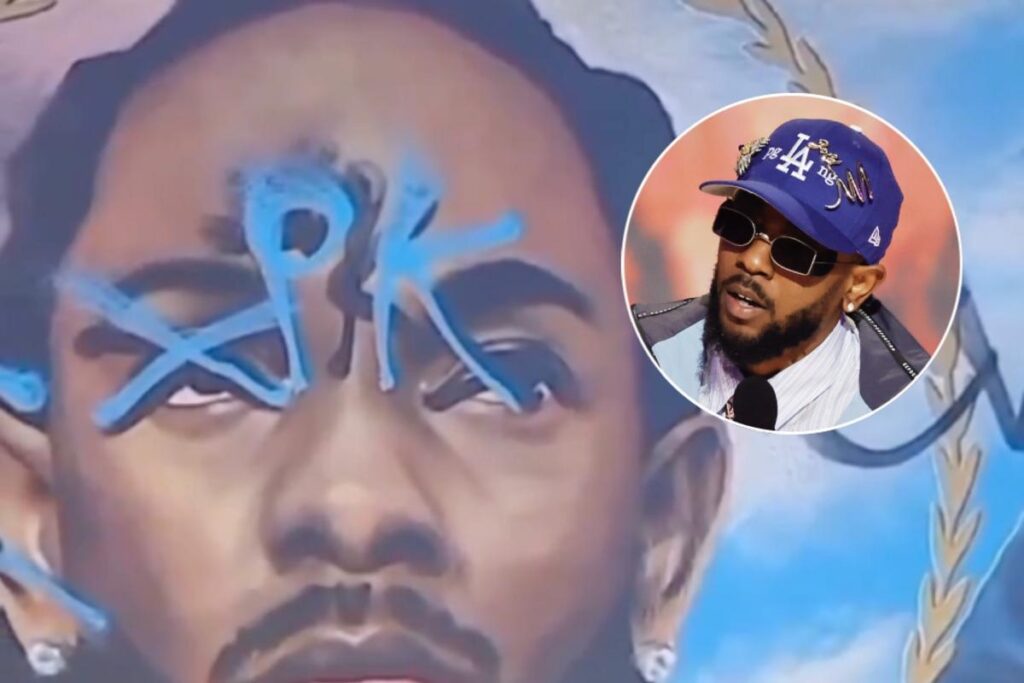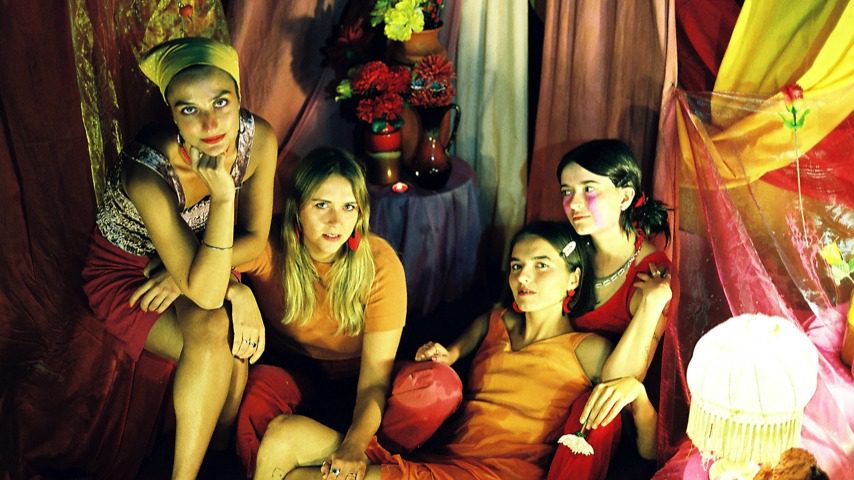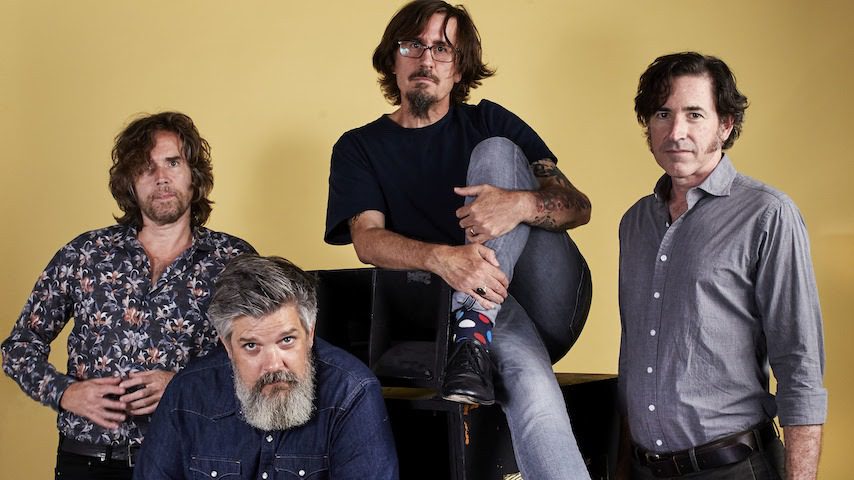The year 1980 began with the last gasps of disco, as Donna Summer sat atop the Billboard Album charts that first week of January. But the backlash was in full swing, and it was coming from all directions. The Rolling Stones released their most disco single, “Emotional Rescue” in June, but hip hop and post punk were getting mainstream exposure. Future legends like Bruce Springsteen, Prince and U2 were coming into their own.
It’s been 40 years since the decade of Reagan and Thatcher began with its promise of economic boom for the Haves and promise of war on the Have Nots. And the transition to a new era brought with it some boundary-pushing music. We look back and celebrate the 20 best albums from 1980, noting that The Clash’s London Calling was released in the U.K. in 1979 and topped the 1979 list we made last year.
Here are the 25 best albums of 1980:
25. The Beat (The English Beat): I Just Can’t Stop It
While many of their 2-Tone Records contemporaries like The Specials and Madness took pains to cover classic ska sides to establish their bona fides, The English Beat took a different tack, embracing easy listening schmaltz with the same fervor as the reggae artists that inspired them. Hence, the group was able to take a 1963 hit by crooner Andy Williams, tease out the romantic sentiments at its core, and turn it into something more slinky and spirited. It helps that the source material was created by the great songwriting team of Doc Pomus and Mort Shuman and that their arrangement is so spare and open that it could be easily adapted for a rocksteady beat and Dave Wakeling’s blue-eyed soul vocalizing. “Mirror in the Bathroom” was the original hit off this record, but “Can’t Get Used to Losing You” would be the true gem released as a single three years later.—Robert Ham
24. The Cramps: Songs the Lord Taught Us
A gleefully raw, thoroughly campy collection, the Cramps’ first LP showcased blaring guitars and Lux Interior’s unhinged vocals on songs steeped in the twin influences of rockabilly and garish B-movie horror imagery: “TV Set,” “I Was a Teenage Werewolf,” “Sunglasses After Dark” and “I’m Cramped” were weird, funny and loud, just like the band as a whole. Speaking of weird: Big Star’s Alex Chilton produced this album, which still seems incongruous nearly 40 years later. —Eric R. Danton
23. Pylon: Gyrate
When Pylon released their debut album, not many outside of Athens, Ga., took notice. But for the art majors and quirky townies in the Classic City, Pylon was the local embodiment of the post-punk scene, proving you didn’t have to be in London or New York to create something special. Droning bass, buzzing guitar and absolutely punishing drums provided the framework for Vanessa Briscoe to scream her way to the edge of insanity. Live, the singer was a spinning firecracker on stage, personifying the album’s title, Gyrate, exploding through songs like “Feast on My Heart” and “Stop It.” R.E.M. ensured the album wouldn’t be lost to history, when drummer Bill Berry proclaimed Pylon the best band in America. —Josh Jackson
22. Split Enz: True Colours
By the time Split Enz released True Colours in 1980 they’d already established themselves as a colorful and bizarro art rock band in their home country of New Zealand. This record changed all that, both commercially and stylistically. The band’s proggier elements were replaced by more streamlined pop songs that were heavily influenced by early-Beatles and the burgeoning New Wave scene, most notably in songs like “Shark Attack” and the psychedelic synth instrumental “Double Happy.” Young Neil Finn, recruited by his brother Tim for their previous record Frenzy, also upped his songwriting game, most notably on Split Enz’s breakthrough single “I Got You,” which stands as one of the best New Wave pop songs to this day. That earworm found its way onto a new network called MTV one year later, and the video—which showed the band hadn’t completely abandoned all their eccentricities—pushed Split Enz from cult band to chart-toppers in New Zealand and Australia, and MTV staples in the States.—Mark Lore
21. David Bowie: Scary Monsters (and Super Creeps)
“There’s a brand new talk,” David Bowie sings on Scary Monsters’s “Fashion,” “but I don’t know its name.” That sense of being slightly disconnected from the punk crowd of the late ’70s and the nascent New Wave scene echoes throughout the album. It’s Bowie trying to figure out exactly where he fits in at that moment in time, and for that reason it’s one of his most underrated albums. While it didn’t produce any massive hits, it did see the return of his Major Tom character on “Ashes to Ashes,” and Bowie manages to work in a dig at the new kids on “Teenage Wildlife”: “A broken-nosed mogul are you/One of the new wave boys/Same old thing in brand new drag.” In short, it’s a legacy artist reminding us that while fads come and go, he’ll always remain relevant, and in that sense, it’s a roaring success. —Bonnie Stiernberg
20. Young Marble Giants: Colossal Youth
This minimalist trio have yet to record a follow-up to their magical debut album, even after playing a bunch of reunion shows together in recent years. And I rather hope that they never try. I think even they know that they will never recapture the same strange combination of rickety drum machine technology, shambling guitar and bass work, and Alison Statton’s just barely in tune vocals. You couldn’t have plotted it out on a map at the time to any degree of success, yet these Welsh wonders did it without a second thought. They used the tools available to them at the time and a keen ear for songwriting (courtesy of guitarist Stuart Moxham) and came up with a sparkling jewel of an album never to be bettered or replicated. —Robert Ham
19. The Fall: Grotesque (After the Gramme)
Mark E. Smith confirmed his status as the funniest man in rock ’n’ roll with the Fall’s third record, where he directs his acid wit towards early Thatcherite England, the cartoonish promise of America, the fatuousness of the music industry, and the gormlessness of modern society and culture. Even at his most scathing and condescending, Smith remembers to toss out one-liners and observations more brutal and hilarious than any comedian on songs like “English Scheme” and “C ’n’ C-S Mithering.” It culminates in the genuine epic “The NWRA,” a ten-minute fantasy of England’s industrial north rising up against their cultural enemies in the south and making a hash of it. —Garrett Martin
18. XTC: Black Sea
Though XTC’s most-celebrated album is 1979’s Drums And Wires, its 1980 follow-up is the superior pop album. Drums And Wires—their third album and first released in the U.S.—rests on sharp guitars, sassy vocals and on-edge rhythms, and it’s certainly more streamlined than their previous work, but Black Sea has even more room to breathe and more satisfying melodies. It leans less on jagged post-punk and more on classic British pop à la David Bowie and The Kinks, which is why it occasionally sounds like a Britpop precursor, though they manage to preserve the bizarre punk quirks that set them apart. “Love At First Sight” and “Burning With Optimism’s Flames” are the perfect fusion of radio pop and forward-thinking punk, and “Generals and Majors” and “Rocket From A Bottle” are refined, buoyant indie-pop classics. The way it merges the past, present and future of British pop music is quite astounding. —Lizzie Manno
17. The Sugarhill Gang: Sugarhill Gang
A lot of the albums on this list were influential in one way or another, but none can hold a candle to how The Sugarhill Gang’s self-titled debut changed the world of music. The five-minute radio edit of “Rapper’s Delight” was already a top 40 single (the first rap song to accomplish that) when Sugarhill Gang was released with the full 14-minute version. Wonder Mike, Big Bank Hank and Master Gee introduced themselves one by one over the chunky guitar of Nile Rodgers and the bouncing bass of Bernard Edwards, and in doing so introduced the world to the rap scene taking over New York and other pockets around the country. The six-song album only contained one other hip-hop song, “Rapper’s Reprise,” which added South Carolina female hip-hop trio The Sequence—”We’re from the north! / We’re from the south! / And as a combination we can rock the house.” Jam on. —Josh Jackson
16. The Soft Boys: Underwater Moonlight
Today it’s hard to understand how the lightly psychedelic pop-rock of the Soft Boys was ever considered anything close to punk. Frontman Robyn Hitchcock is basically just Elvis Costello without the need to appear at every all-star jam. Underwater Moonlight sounds like the best bar band in the world playing hits from a world that’s better than our own. “I Wanna Destroy You” and “Queen of Eyes,” especially, should be radio staples. —Garrett Martin
15. The Feelies: Crazy Rhythms
If I had a musical time machine, one of my first stops would be to visit the post-punk scene of New York right around 1980. I’d go see The Feelies at CBGB right after their debut album Crazy Rhythms and watch the crowd of other young musicians react to the melding of driving bass and drums with experimental guitar, a sound that would help inspire some of the best New Wave, gothic rock and jangly college rock to follow. When they sing about “The Boy with the Perpetual Nervousness,” you can feel it in Anton Fier’s drumming and the way every instrument plays around the frantic beat. This was the essential link between The Velvet Underground and R.E.M. —Josh Jackson
14. Bruce Cockburn: Humans
Few songwriters are as keen observers of humanity as Canada’s Bruce Cockburn, and he’s never been better than he is here, in the wake of a failed marriage and a move to inner-city Toronto. Here his writing began to get more political and outward-looking without losing the spiritual underpinnings and openness that made him unique. He compares humans to cattle in “Grim Travelers,” rattling off the problems of capitalism, imperialism and industrialism in verse after verse, and that’s just track one. And yet, in “Rumours of Glory,” he celebrates what humanity can be, “shining like gold but better.” It’s an optimistic album that pulls no punches on the struggles we face, struggles that haven’t changed all that much in 40 years and which Cockburn is still struggling against today. —Josh Jackson
13. AC/DC: Back in Black
On the night of February 18, 1980, AC/DC vocalist Bon Scott left the London club Music Machine and never made it home. He died sometime early the following morning, under somewhat mysterious circumstances likely involving alcohol or drugs. That was nearly the end of the Australian hard-rock band as well, but, with the encouragement of Scott’s family, the remaining members decided to keep going. Their next album, Back in Black, released just five months later with Englishman Brian Johnson taking over vocal duties, would become one of the best-selling albums of all time—25x Platinum in the U.S. and an estimated 50 million copies sold worldwide. From the moment Malcolm Young’s guitar kicks in after the sound of bells tolling on “Hell’s Bells,” it was clear that though they’d lost a dear friend, they hadn’t lost their swagger. “Shoot to Thrill,” “Back in Black,” “You Shook Me All Night Long” and “Rock and Roll Ain’t Noise Pollution” helped carry classic hard rock into the 1980s, led by Angus Young’s shredding lead guitar and supported by the tank-heavy rhythm section of Phil Rudd and Cliff Williams. —Josh Jackson
12. Emmylou Harris: Roses in the Snow
Having flirted with country traditions early in her career, Harris went all in and made this, a drummer-less bluegrass album, one of her very best recordings. Her high, lonesome soprano was well suited to the music, and with a band featuring Ricky Skaggs, Jerry Douglas, Tony Rice and Emory Gordy, she had the best pickers available. The majority of the material was pre-Beatles bluegrass and country, and the treatments combined a genuine respect for the sources with a modern-pop precision. Skaggs sang four duets with Harris and guided the arrangements, which anticipated his own bluegrass-country hits. —Geoffrey Himes
11. Steely Dan: Gaucho
Gaucho consummated Steely Dan’s metamorphosis from early ‘70s New York jazz-rock band to early ‘80s L.A. studio hermits. The album pushed Steely Dan to limits both personal and professional—the grooves had never been smoother, the lowlife characters had never been sleazier, the recording sessions never more obsessive. (According to legend , the drum track on “Gaucho” was spliced from 46 different takes. 46!) With a sardonic smirk, Donald Fagen recounts the misadventures of an aging hipster struggling to relate to his 19-year-old girlfriend (“Hey Nineteen”) and a drug dealer hustling for deals at Mr. Chow’s restaurant (“Glamour Profession”). Other highlights include the shuffle-beat classic “Babylon Sisters” and the heroin-inspired “Time Out of Mind.” Is it Steely Dan’s best album? Debatably. Is it Steely Dan’s most Steely Dan album? Absolutely. —Zach Schonfeld
10. Tom Waits: Heartattack & Vine
After recording his sixth album, Blue Valentine, Tom Waits broke up with Rickie Lee Jones and left Los Angeles for New York, moving into the Chelsea Hotel. He eventually returned to Los Angeles at the request of Francis Ford Coppola to record music akin to his early work for One from the Heart. But Waits was restless and traded out piano for blues guitar for his own next project, Heartattack and Vine, his final album for Elektra-Asylum. He’d just met (and almost immediately married) his wife Kathleen Brennan, and Waits sings with an urgency that almost reaches desperation on songs like “Downtown.” Heartattack and Vine was a transition between the jazzy orchestral arrangements of his early work and the deconstructed songwriting and experimentalism of the albums that would follow. Ballads like “Jersey Girl” and “On the Nickel” sit alongside the fever-dream roadside blues of ”’Til the Money Runs Out” and “Mr. Siegal,” which more than hinted at the brilliance to come next with Swordfishtrombone. —Josh Jackson
9. Squeeze: Argybargy
The razor-sharp songwriting of Chris Difford and Glenn Tilbrook might’ve hit its peak on Argybargy, the third in a run of five great records released over five consecutive years. “Another Nail in My Heart,” especially, is power pop perfection—three minutes of hooks piled on top of each other, with smart, lovelorn lyrics that are self-critical without resorting to self-pity. “Pulling Mussels (from the Shell)” is short story as pop song, a wry, incisive look at how working class Britons circa 1980 vacation wrapped up in a jam that sounds great coming out of a radio. Those are the hits, but Argybargy is full of smartly observed, exactingly constructed pop songs that capture not just the sound of 1980 but the everyday moments as well. —Garrett Martin
8. Devo: Freedom of Choice
Freedom of Choice marked the beginning of a new era for Devo, almost entirely ditching the raw, post-punk sound of the late ‘70s and embracing and popularizing synth-pop. The album also changed the physical look of the Mothersbaugh-and-Casele group with the emergence of their strange, red plastic hats. Those “energy domes,” as they called them, made Devo a prime example of classic ‘80s culture. Freedom of Choice is a treasure of propelling bass lines and revolutionary synths seasoned with tongue-in-cheek lyrical delivery, blazing the electronic trail for many musicians to come.—Annie Black
7. X: Los Angeles
X’s debut Los Angeles set the template for The John Doe and Exene Cervenka Show, the great punk soap opera of the 1980s. Falling in and out of love and hate over every album, they gave us every detail of every booze-fueled breakdown, and always left room for bitchy asides about the rest of the poseurs and degenerates trying to make the scene in the shadow of Hollywood. Billy Zoom’s maximum surf and rockabilly riffs always helped made sure the desperation never felt like a drag. —Michael Tedder
6. Prince: Dirty Mind
Prince’s first two albums were overlooked gems, near-perfect confections of sexy R&B. But it was on Dirty Mind, his breakthrough record, that Prince established the sound and persona that would make him the most fascinating artist of his generation. The sex became more explicit and exciting, and so did the hints of New Wave rock that had been flickering in his early work. Like Stevie Wonder, Prince could do it all: write earworm melodies, create super-funky rhythms, excel on every instrument and sing like an angel. Unlike Stevie, Prince could do it in a way that got under your skin and made you squirm. —Geoffrey Himes
5. Joy Division: Closer
The second—and sadly, final—effort by these post-punk legends is shrouded in gloom; part of its inherent melancholy stems from the fact that lead singer Ian Curtis committed suicide only two months before its release, ending his life just as Joy Division was climbing towards what may have been the group’s creative peak. However, remove Curtis’ death from the equation and you’re still left with a record full of bass-heavy pathos that’s positively haunting and oddly comforting at the same time. —Bonnie Stiernberg
4. The Clash: Sandinista
White people were still trying to figure out exactly what hip hop was in December of 1980, and here was The Clash, leading off the feverishly anticipated follow-up to instant classic London Calling with “The Magnificent Seven,” one of the first rap songs many rock fans ever heard. And if Joe Strummer wasn’t exactly Big Daddy Kane rhymewise, the gesture showed that The Only Band That Matters were still as curious about the outside world as ever, whether that meant exploring New York street art or South American political movements. Sandanista! doubled down on the genre exploration of Calling, investigating dub, blues and folk music to see what they could say to punk rock. A triple album, Sandanista! overflowed with musical ideas and outspoken lyrics, finding beauty in information overload. —Michael Tedder
3. U2: Boy
With their blindsiding debut LP Boy, U2 married post-punk’s stark rhythmic force with grandiose arena-rock majesty. Bono is the beacon of spiritual vigor, propelling anthems like “I Will Follow” and “The Electric Co.” The Edge’s echoing guitar is amplified lightning. But the band’s unsung post-punk nucleus is the rhythm section: Bassist Adam Clayton and drummer Larry Mullen Jr. keep the songs anchored on Earth, as their bandmates gaze into the beyond. —Ryan Reed
2. Bruce Springsteen: The River
Bruce Springsteen’s The River falls right in the middle of one of the greatest decade-long runs by any artist, coming after Born to Run and Darkness on the Edge of Town and just before Nebraska and Born in the U.S.A. While arguments can be made for any of the five albums recorded from 1975-1984, The River remains my favorite given its ambitious and cohesive message. It was a working-class record made in the height of a recession, chronicling the ups and downs of living in harsh economic conditions. The Boss has been both more triumphant and darker in singular moments, but it’s throughout this sprawling double album that he makes his most honest statements. As we find ourselves in the midst another recession, Springsteen’s message throughout The River no longer simply echoes sentiments of a singular experience but has emerged as a timeless sentiment speaking to the American workingman’s struggle. —Max Blau
1. Talking Heads: Remain in Light
For their fourth and finest record, the Talking Heads (along with producer/collaborator/all-around musical badass Brian Eno) trotted out their African influences in full force. Polyrhythmic, lyrically cryptic and featuring one of the most awesomely weird guitar solos of all time (Adrien Belew’s blippy genius on “Born Under Punches”), Remain in Light stands as David Byrne and company’s masterpiece. It’s rooted in tradition, yet it sounds delightfully futuristic—even three decades after its initial release. —Bonnie Stiernberg




